If you haven’t tried eating vegetable stems, you’ve missed out. Of course, with the wide variety of vegetables available to us, it might be hard to keep track of which stems you can eat and which ones you can’t, or shouldn’t eat.
Then there’s the taste aspect. What I enjoy eating may not be what you enjoy eating, therefore, I won’t vouch for all of the stems. I will, however, present them to you in a manner that makes it easier for you to decide for yourself.
I think people in western society are accustomed to eating stems of vegetables that we consider common, which means there’s a lot left to explore.
Eating the stems may not sound very appealing, but they’re an edible part of the vegetable, which tastes pretty much the same as the vegetable itself.
The primary and most noticeable difference between the vegetable’s body and its stem is often the texture. You may not have thought about it but on some vegetables, the stem is all we eat.
Celery, for example.
I promise you that there are a bunch of other vegetable stems that you may not have considered eating yet. Hopefully, after reading this article you will be curious enough to try some of the alternatives in the list down below.
Which Vegetables Stems Do We Eat (And Which Ones Can You Eat)?
Here’s a list of stems we commonly eat and others that are edible, but less commonly found in dishes. In fact, on some of the vegetables in the list below, the stem is the only part you eat. Do you know which ones?
- Asparagus
- Celery
- Bamboo shoots
- Broccoli
- Cauliflower
- Kohirabi
- Radish
- Onion
- Beet
- Rhubarb
- Shallots
- Leek
- Chard
- Fennel
- Kale
- Carrot
- Turnips
- Brussel Sprouts
- Scallion
All vegetables that I know of consist of multiple parts. Well, the plant itself consists of multiple parts. The plant is then separated into different parts.
Some parts are edible, while others aren’t. In fact, some parts are toxic and shouldn’t be consumed by humans.
Vegetables that we primarily eat as stem are the following; celery, asparagus, broccoli, rhubarb, cauliflower, bamboo shoots, and scallion. These vegetables are made of the stem, but the stem isn’t the only thing that’s edible on all of them.
Depending on which vegetable we’re talking about, the edible parts can be its roots, stems, leaves, seeds, bulbs, or tubers. Today, we’re looking at which vegetable stems can be eaten and also giving you ideas of how to prepare and eat them.
Types of Vegetable Stems That Are Edible
Now it’s time to get into the trenches to find the real action. We’re going to take a look at each stem.
Asparagus

Asparagus is a stem vegetable, which we covered earlier. Asparagus goes well with a lot of different food and can be cooked in multiple ways. You can put asparagus on the grill, fry it in a pan, or boil it in water.
You can cook the entire asparagus without removing any parts but keep in mind that the bottom part of the “stalk” can be tough to chew.
If that isn’t your piece of cake, simply remove the bottom of the asparagus and cook the remainder of it. Regardless of how you decide to cook asparagus, seasoning it properly is an important step that will make a huge difference.
Here are some tips on what you can do with asparagus.
- Put in the oven, brush a little butter on it and add salt.
- Place in the air fryer, oven or frying pan with garlic powder, salt, and pepper.
- Boil then season with salt
- Cut into smaller pieces and prepare them in the oven then dip the sticks in seasoned yoghurt or other dip sauce of your choice.
Asparagus is oftentimes served with potatoes, meat (or vegan substitute), and gravy.
Broccoli
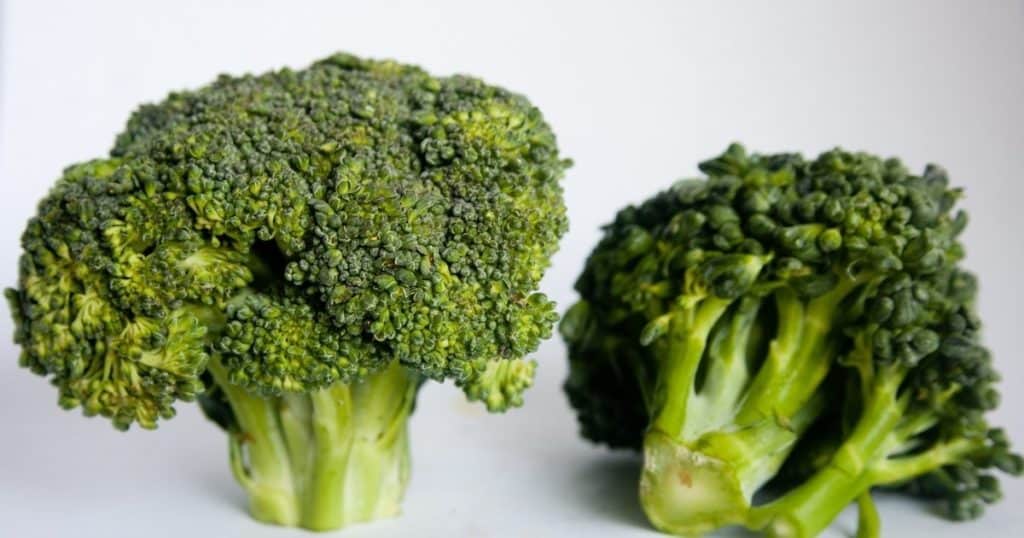
Broccoli is a vegetable that most of us have eaten or seen before. Yes, the stem too.
It’s a nutritious vegetable that can be enjoyed both raw and cooked. Broccoli looks like a little tree, with the stem being the actual tree, and the small bushes the leaves – or florets.
All parts of the broccoli tree are edible, both raw and cooked. Keep in mind that the stem is a solid chunk, which can be hard to chew when it’s raw – but the fibers break down under high temperatures, making it much softer.
Broccoli can be found in stores, both fresh and frozen, chopped into smaller pieces or whole.
What can you do with broccoli?
Broccoli is usually either boiled, steamed, roasted, or grilled – and turns out great regardless of the method of cooking.
- Boil the broccoli then mix it with whipped cream and spices in a mixer to make a creamy soup
- Add oil and spices to it then put it in the oven. Garlic powder and salt are great options.
- Put on the grill in a foil-packet with lemon and salt. Alternatively, sprinkle parmesan cheese on top when removed from the grill.
Rhubarb

Rhubarb is the edible stalk or stem of a plant called Rheum. Rhubarb is often treated as a fruit more than a vegetable, meaning it’s seldomly part of a salad, but quite often used for pastries.
That’s not entirely true, there are plenty of salad recipes that contain rhubarb. But still, I consider it rare.
The edible part – the pink stalks – can be eaten both cooked and raw but eating them raw is, and I think most people will agree with me, a bitter and sour experience.
However, cooking them in sugar and combining them with sweet berries will create a perfect mixture of sour and sweet.
When buying rhubarb, looking at the color of the stalks will make a big difference in taste. These stalks range from dark red to green color – and the more towards the dark red they are, the less bitter the taste.
The plant’s leaves are, on the other hand, not edible. They contain high levels of a poisonous chemical called oxalic acid.
What should you do with rhubarb? Rhubarb can be sauteed, stewed, or pureed. Doing this will grant you the possibility of making any of the following desserts.
- Rhubarb pie
- Rhubarb muffins
- Rhubarb scones
Bamboo shoots
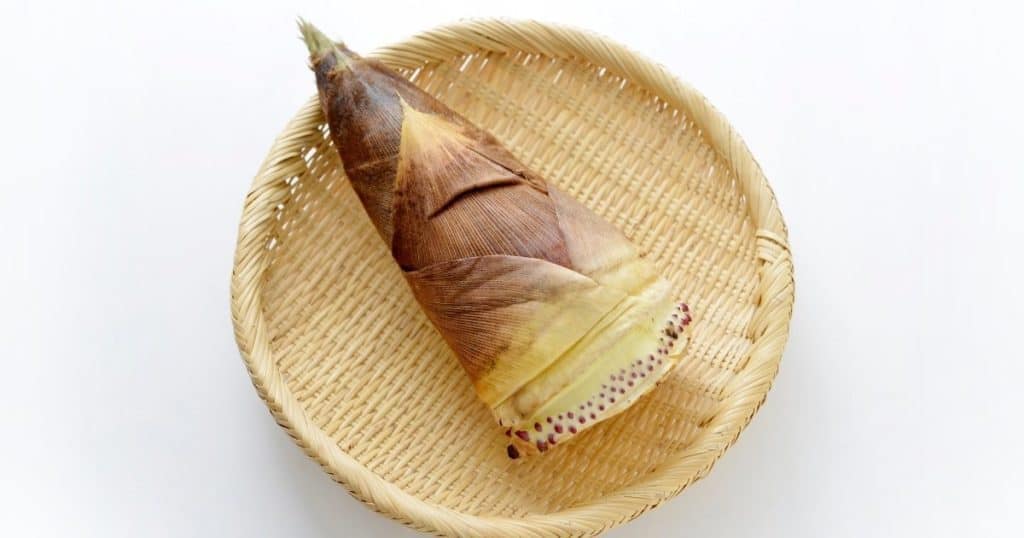
You may be familiar with bamboo if you’ve eaten Asian food, as bamboo is common in Asian cuisine, but rarely found in western countries. The only part of the bamboo that you normally find in food is actually the stem.
Unlike the other vegetables that we’ve covered so far, bamboo shoots shouldn’t be eaten raw for safety reasons. Bamboo may contain potentially harmful toxins when raw. These toxins are removed from the bamboo when it’s cooked.
Bamboo is traditionally boiled when used in food to give it a soft texture. It can also be fried in a wok pan, steamed, or grilled.
What should you do with bamboo shoots?
- Put it in a wok pan and stir fry with other vegetables, chicken or beef, and noodles.
- Use it as filling in spring rolls and dumplings
- Use it in soup
Celery

Celery was the vegetable we talked about earlier in the article. The stem is the primary part of celery that’s consumed. The leaves can also be eaten. Both the celery stem and the leaves can be consumed raw and cooked.
Raw celery can be cut into smaller pieces and eaten as snacks – commonly used as sticks which you dip into any sauce of your choice or used in a salad. The leaves can be used to give flavor to stock or broth.
Cooked celery is traditionally turned into soup, used in stews, stir-fried, or eaten as it is. There’s one more place where you’ve most likely seen celery, and that’s next to a batch of chicken wings.
Cauliflower
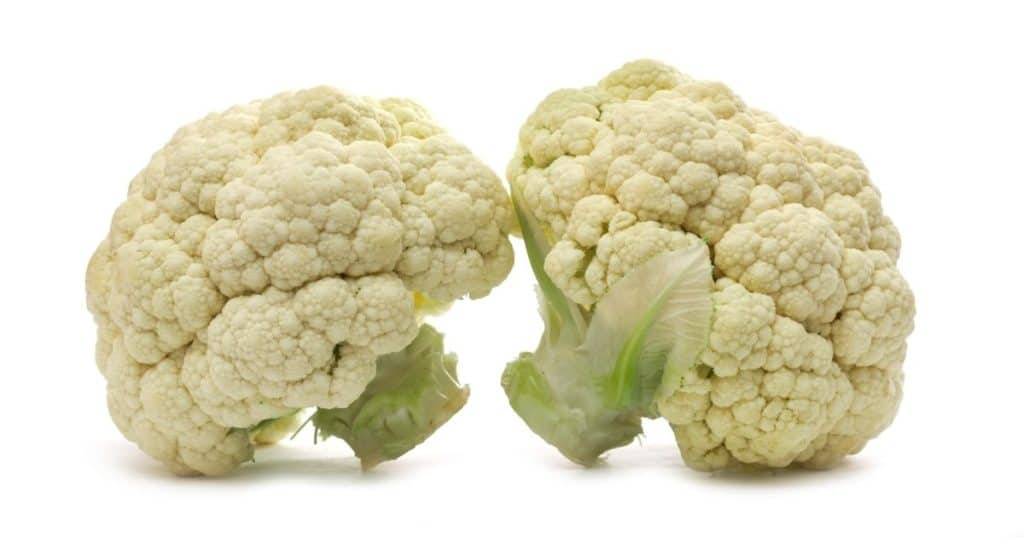
The cauliflower’s stems are, along with the florets and the leaves, both edible and tasty. Cauliflower florets and broccoli florets are reminiscent of one another. The different parts of the cauliflower taste pretty much the same, while the texture varies a little bit.
While the cauliflower’s leaves are edible, they’re often discarded.
Cauliflowers are either cooked whole or cut up into smaller pieces. I wouldn’t say it’s normal to only eat the stems, but it can be done. Regularly, the stems are eaten together with the florets.
Cauliflower is delicious and shouldn’t be overlooked. There are plenty of ways to cook cauliflower. It can be roasted, grilled, boiled, fried, steamed, pickled, or just eaten as it is.
Here’s what I like to do with cauliflower heads.
- Boiled cauliflower with salt
- Grilled cauliflower with butter and salt
- Roasted cauliflower with your favorite spices
- Cauliflower rice
- Mashed cauliflower
Radish
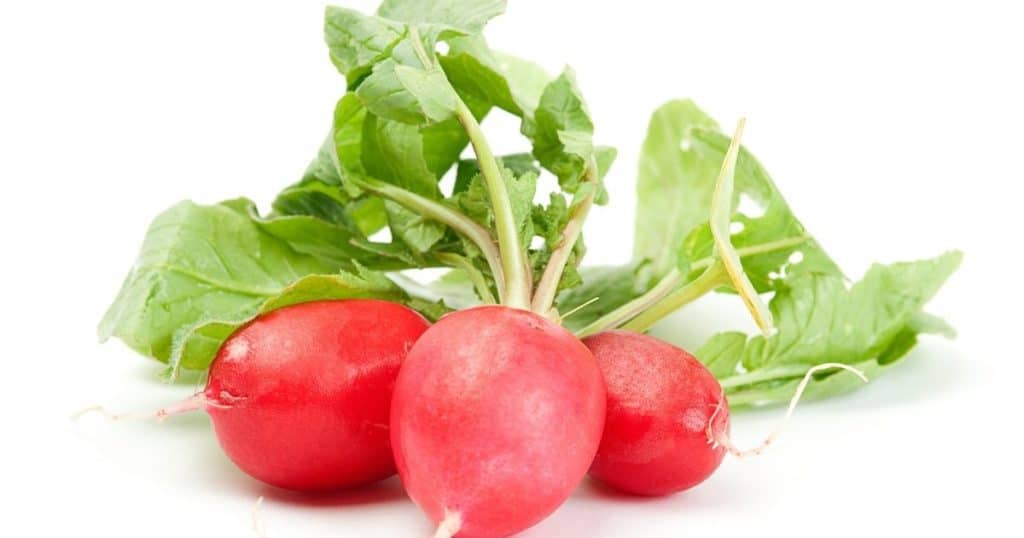
Radish roots, stems, and leaves are all edible but the bottom part of the stem is kind of rough and can be hard to chew. Even when cooked, the part of the stem that’s closest to the root remains stiff. You’ll find the stem on top of the radish.
Radish stems and leaves are perfect to make broth or stock on. People traditionally discard of radish stems and leaves, which is a waste of completely fine food.
The radish’s greens carry a peppery flavor and can be sauteed, roasted, steamed, grilled, or eaten raw.
Kohlrabi

Kohlrabi is part of the cabbage family, and the taste is similar to that of broccoli stems but it carries a slightly more peppery taste. Kohlrabi and its stems are also sweeter than broccoli.
Both the stems and leaves are edible, and the stems are perfect for salads and slaws.
The leaves can be cooked similar to kale or collard greens but need to cook for a bit longer. The stems can be baked, sauteed, steamed, stir-fried, grilled, or boiled.
If the stalk (or stem) isn’t mature enough, it will most likely be too tough. You can test this out by cutting a piece of the stem and taking a bite out of it. The stem will, and should, be tough but it shouldn’t feel like you’re eating wood.
Stir-frying the stems and leaves with other vegetables, beef, chicken, or any vegan protein alternative is delicious.
Brussel Sprout
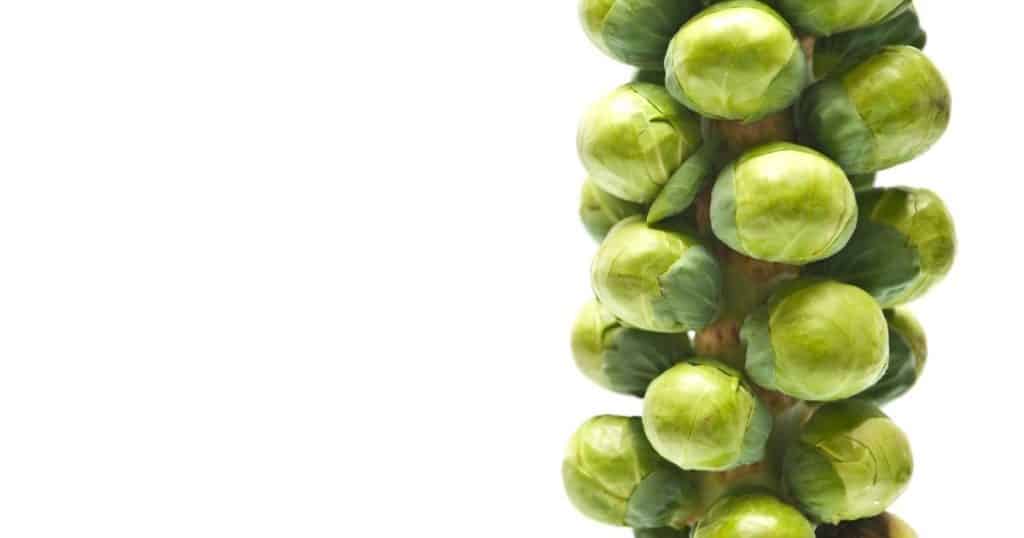
Isn’t it hard to picture how all these vegetables grow? Is it from a tree, on the ground, or from a bush? It was just recently that I saw my first brussel sprout stalk, with the sprouts hanging from it.
Brussel sprouts are regularly sold without the stalk, so it’s rare to see the vegetable intact. Some stores and markets sell the sprouts while they’re still on the stalk. The stalk is edible and can be cooked together with the sprouts.
I recommend placing the stalk together with the sprouts in the oven then adding oil and your favorite spices and letting them roast for a while. Cut the stalk into smaller pieces if it’s too big for your oven.
The stem isn’t as soft as the sprouts so it creates a nice texture to match the otherwise mushy inside of the Brussel sprouts.
Carrot
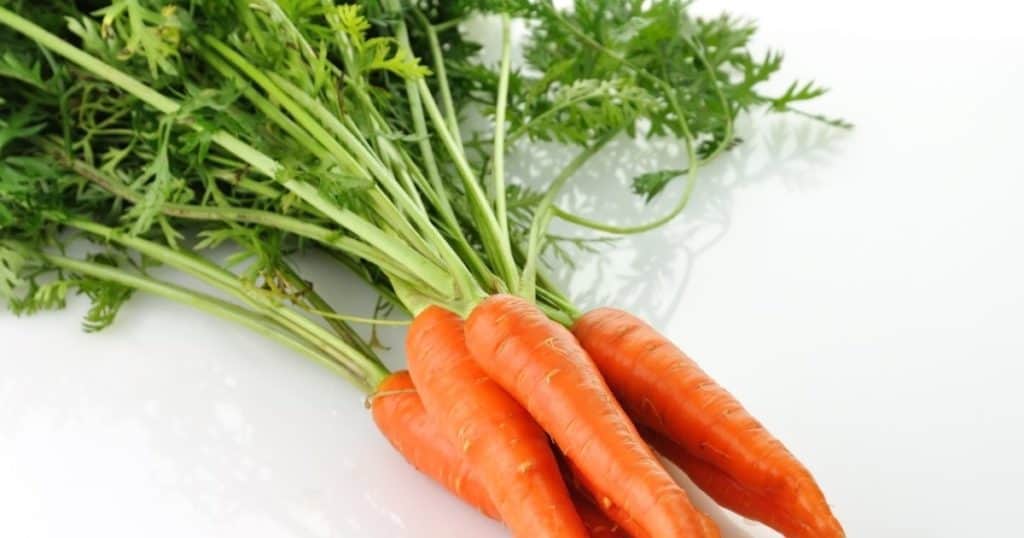
Carrot stems, also known as carrot tops, are edible and carry a bitter taste that can be used to bring taste to all different types of dishes. Cooking the greens will somewhat neutralize the bitterness but not remove it.
Start including your carrot tops in your cooking instead of discarding them. They’re perfect for salsas, pesto, and salads.
Onion
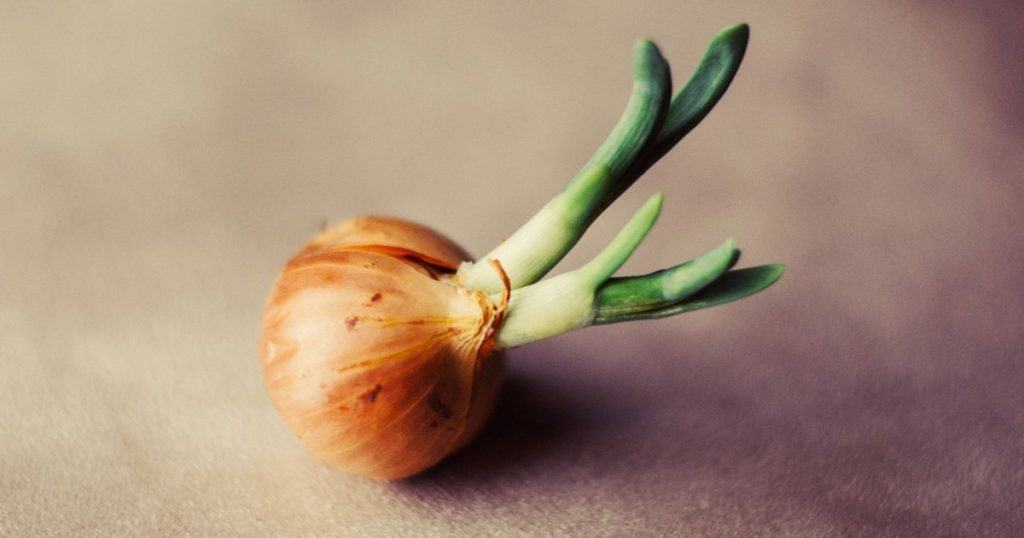
You traditionally eat the “bulb” part of an onion. The bulb has a big green stem attached to it, which is just as edible as the onion itself.
The stem has a mild onion flavor and can be cooked or consumed like similar to scallions or chives. Cut them up and mix them in salsa or aioli, sprinkle them over chili, scrambled eggs, nachos, or quesadillas, for instance.
Beet
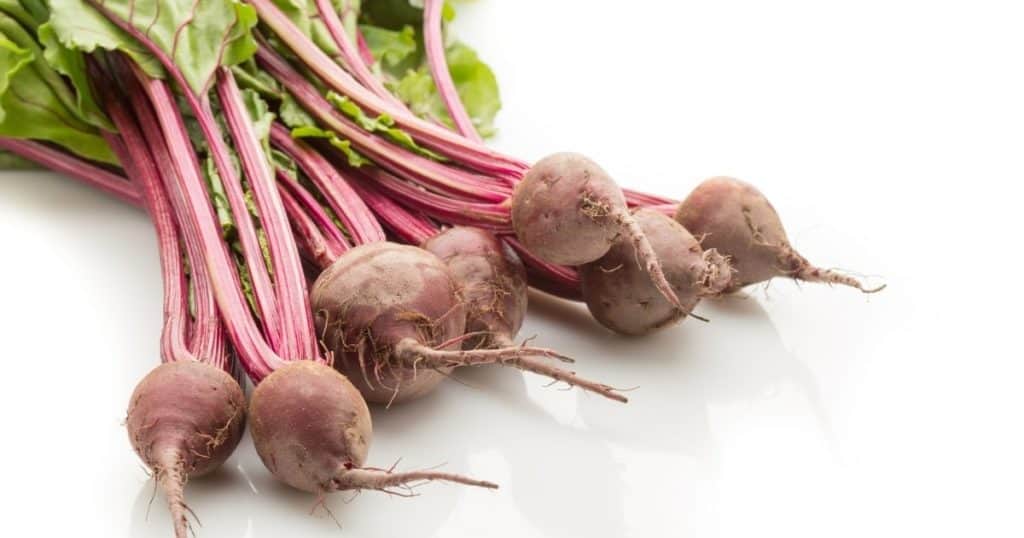
Both the leaves and stems of beets are edible and are a great source of minerals and vitamins. Beet stems are delicious, the taste can be described as a sweeter version of Swiss chard.
The taste of the stems accompanies the taste of the beets very well, making all parts of the vegetable the perfect mixture for either salad or a warm dish.
Leek
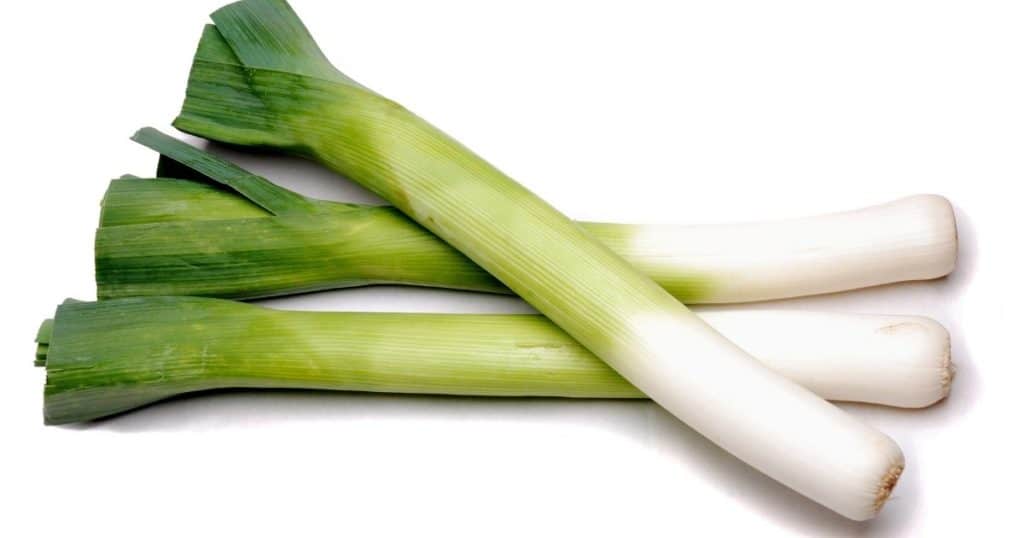
Leek stems are also edible. The edible part of the vegetable is the stem, which looks like a stalk with leaves layered on top of each other. You can cook the entire leek and eat it whole or cut it into smaller pieces and put it in soups, salads, and many other dishes.
Fennel
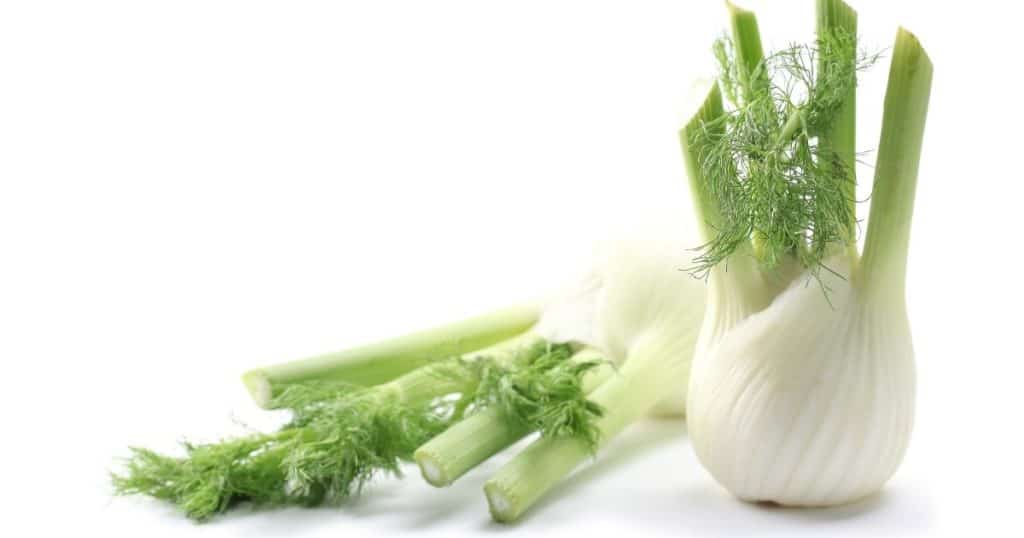
Fennels look like many other vegetables that are grown underground, think onions of different types. It’s a bulb with multiple stalks or stems attached to it. While most recipes that include fennel call for the bulb, the stems are just as edible and tasty and can be used for various different types of cooking.
The stems can be eaten both raw and cooked, they have a mild licorice flavor and are quite tough. If eaten raw, make sure to slice the stem into thin pieces to break the fibers, making it easier to chew.
Cooking the stem will soften it substantially. Fennel stem can be used for pesto, stock, salads, juices, or as toppings on your favorite dishes.
Turnips

Turnips have earned their place on this list and then some. Turnips can be eaten from root to stem, which is great because turnip stems and leaves are considered to be some of the most nutrient-dense foods, according to their Aggregate Nutrient Density Index score.
Turnip stems can be eaten raw but they’re delicious when steamed, sauteed, or boiled. To find a good specimen in stores, look for the ones that look plump and have a rich green color but avoid the ones that are starting to turn yellow.
Kale

While kale stems may not be as appealing as the kale leaves, it’s still edible. It must, however, be cooked in order to tear the rather tough fibers apart, making it chewable. Blanching the stems for a little while before sautéing or frying should suffice to make them soften enough.
Kale stems are delicious to fry, pickle, or roast.
Are Vegetable Stems Healthy?
Most vegetable stems contain nutrients just like the other edible parts of the vegetable. The number of nutrients and the density of said nutrients varies from one vegetable stem to the next. The same thing can be said about the vegetable itself.
Sometimes, the stems (or stalks) and leaves can carry even more nutrients than the other parts of the vegetable. Never eat parts of a vegetable if you’re unsure whether they’re edible or not. Some leaves or stalks can contain high levels of substances that can have a negative impact on your body.
However, when it comes to edible parts of vegetables, be it stem, bulb, floret, or leaves, they’re often packed with nutrients, and eating them minimizes food waste, which is great.
Which Stems Do We Eat as Vegetables?
We talked about this earlier but because the list of vegetable stems grew longer and longer, it might be helpful to include a separate resource that states which of the vegetables we’re familiar with that are served as the stem.
- Asparagus
- Celery
- Rhubarb
- Broccoli
- Cauliflower
- Bamboo shoots
- Scallion
Conclusion
As it turns out, stems are more often than not edible and come packed with both nutrients and flavor. To all of you who either grow your own vegetables in the garden or purchase vegetables with the stem still on; don’t throw the stems in the trash can right away.
With a little creativity, a couple of stems can go a long way. Once you’ve learned the ropes you’ll know exactly how to get the most out of every vegetable.

